“Casi me emociono” said a woman standing next to me as I used the back of my hands to dry my own eyes. She “almost” got emotional. It was her way of saying it brought tears to her eyes, as it had mine. I was tempted to tell her “Y no soy ni chilena” (I’m not even Chilean) and then thought, “why?” Why point out differences on a day like this? This day was the 8th of March, 2019, at the Santiago March for International Women’s Day, a day of commemoration, not celebration. And we had both just witnessed this.
Please watch it. It might make you cry, though it might not. This is the group La SiHembra a street performance collective, who here is singing a murga cuequera (cueca, the national music of Chile, but sung street side). What you see is one young woman dancing the traditionally male part with an older woman passerby, who is dancing the traditionally female part. The lyrics of the song that really hit me were:
“A escribir escribir los nombres de tantas mujeres muertas” (To write down, write down the names of so many deceased women)
Which is an homage to those killed by femicide, of which we’ve had eleven already this year in Chile. But it also harkens back to every woman killed for being female across generations, and around the world. The coming together of generations, the recasting of the cueca as something feminist, and the semi-subversive act of two women dancing the cueca really struck me, and set the tone for me for the rest of the march, the idea that we are all in this together.
My first impression of the day was coming across a group of high-school aged people (mostly young women) at around 2 PM (the march started at 6), chanting one of the main slogans of the march, here near Bellas Artes.
No es no
Que parte no entendiste?
La N o la O?
(No means no, which part did you not understand, the N o the O?)
Throughout the rest of the day, I would see literal signs, like this one on Bilbao, using the a representation of the green kerchief of the pro-choice movement to cover the front of the Revolución Democrática building in Providencia.
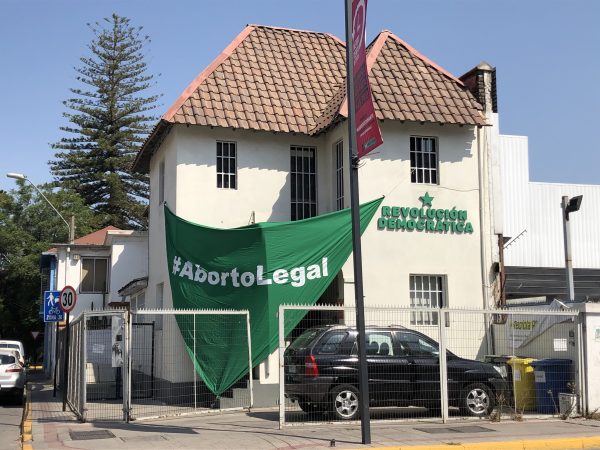
The green scarf has come to represent the fight for abortion rights. Abortion was illegal and criminal (women who sought out abortions could be criminally charged) in Chile until 2017, when abortion was legalized for what are referred to as the “3 causales” which are in the case of incest or rape, fetal abnormality (inconsistent with life), or to save the life of the mother. This green kerchief we borrowed from our sisters across the border in Argentina, who in some sense borrowed it from social protest involving the mothers of the disappeared during that country’s dictatorship.
Those sightings were both long before the march was due to start, and I could feel the energy was bubbling just under the surface all day long. I left my house downtown a bit after the time the march was called for, heading up the Alameda towards Plaza Italia and easily catching up with many groups who were also marching up to meet up with the marchers coming down. I stopped a while at the GAM, where I saw many dancers and performers, noting that even at this early hour, this march was way more packed than the Ni Una Menos march a few years prior. I weaved my way through the crowds heading further towards Plaza Italia and saw what is often one of my favorite signs in the women’s movements here.
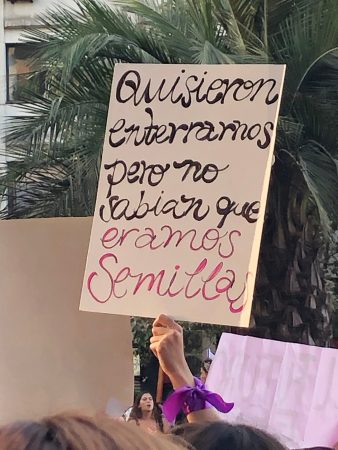
They tried to bury us. They didn’t know we were seeds.
This has always been a favorite of mine, and I just learned that credit for the origin of the phrase dates only back to the 1960s, to a Greek poet (more info here). But I love this expression because it speaks of the potential in each of us.
I also love this one
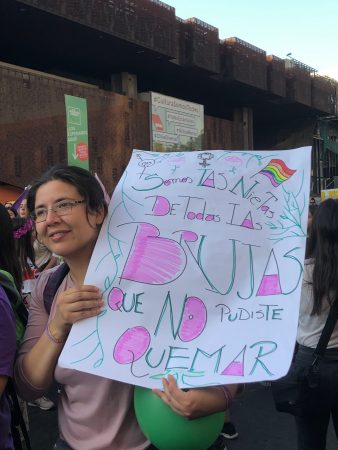
We’re the granddaughters of all the witches you couldn’t burn. I’m telling you, the cross-generational vibe was strong.
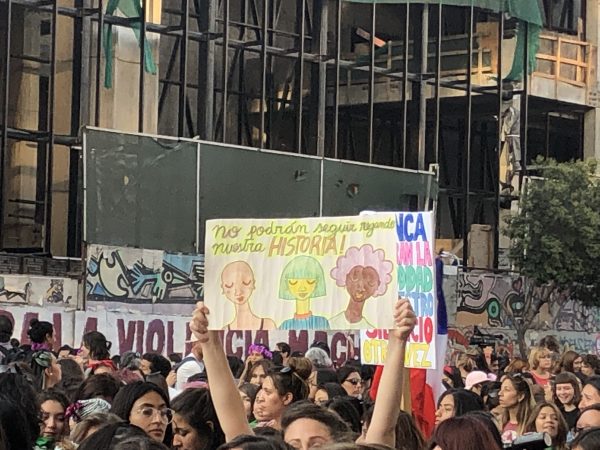
Chile’s diversity is an oft-contested topic. Here’s one of the few intersectional signs I happened to see. Sexual minorities and trans people were represented in larger and smaller numbers, respectively. This sign says, “they won’t be able to keep denying our history.”
Woman after woman carried signs talking about having a voice.
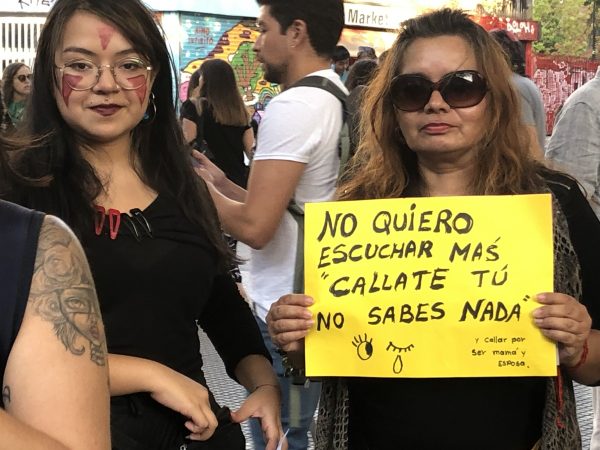
This one says: “I do not ever want to hear again ‘shut your mouth, you don’t know anything’ (and be quiet because I’m a mother and wife).”
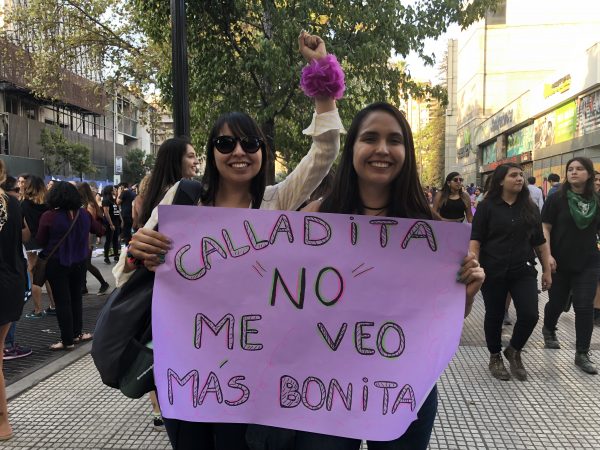
And this one says: “I do NOT look more beautiful with my mouth shut.”
Which is kind of a double whammy. A stab at that old Spanish adage “calladita de ves mas bonita” (you’re more beautiful when you keep your mouth shut, which is specifically aimed at girls and women), and also manages to fly in the face of one of Chile’s most famous misogynist poems, by Pablo Neruda, which begins “I like it when you’re silent because it’s like you’re not here” (Me gustas cuando callas porque estás como ausente), and yes, I really used to know someone who said this to me all the time. He thought it was hilarious.
Overall, though each individual act, garland, kerchief, sign, drummer and song made up part of the march, together we were 190,000 strong. And it was phenomenal. I have been to many protests and marches here in Chile, either because I am down with the cause, or because I used to report on them. And this was enormous, a veritable shark beside a barracuda. It was so crowded that it was wall-to-wall people for hours. One friend messaged me to say she’d seen me taking pictures, but couldn’t get anywhere near me, and another and I managed to meet up over the course of an hour while she slowly inched her way towards me (we were about 100 meters apart). My cell coverage was patchy, because everyone was uploading or geolocating each other. It was a joy to hear so many voices together. For abortion rights, against rape culture, reminding the police that we’re “decent people” (itself a judgement on what it means to be indecent in this world, but you can’t have everything). I wish I could have brought you all there to see it.
Here’s the crowd shuffling along to the sound of a batucada, or a drum group. I have to say, there are a few such groups that practice near my apartment, and while that’s not my favorite feature of warm nights, they do really belong in a parade. The crowd had thinned out a little bit here, but check out this danceable beat and how far the crowd stretches.
These people with hula hoops were chanting: WTF? they kill us and rape us and no one does a thing (it rhymes in Chilean Spanish, “y cómo, y cómo, y cómo es la wea? Nos matan y nos violan y nadie hace na´”).
And to go with it, this person carried a sign that is also a nod to the #metoo movement, It says, “I believe you, sister.”
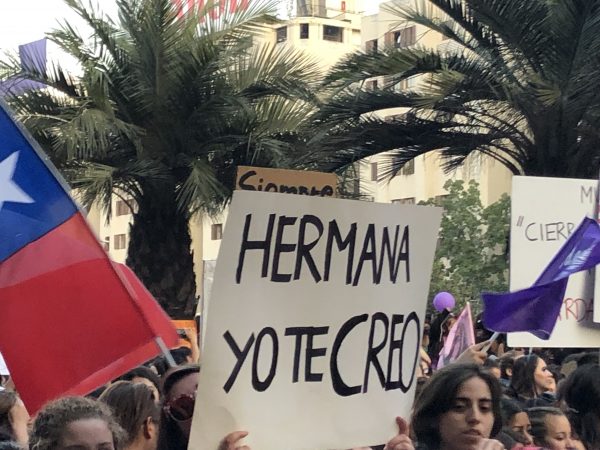
This march was so big, and it would be a terrible disservice if somehow I failed to show you just how powerful it was. How many people were rising in discontent, demanding a better future for themselves and the generations that follow. This video is from a couple of hours into the march, at around 9:20, taken from the plaza near the Archivo Nacional where we could get a little height, and some air.
There is so much in Chile that is of course, not perfect. But this march sparked all the emotions. I couldn’t have been happier to have been part of this moment. As this sign proclaims:
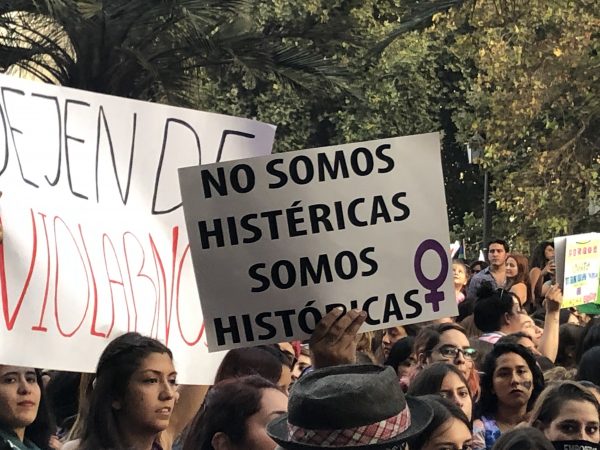
“We are not hysterical, we are historical.”
Contact me for more info/rights/interviews.


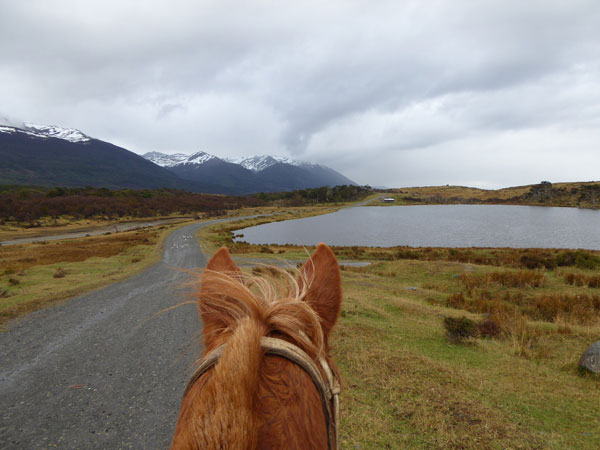

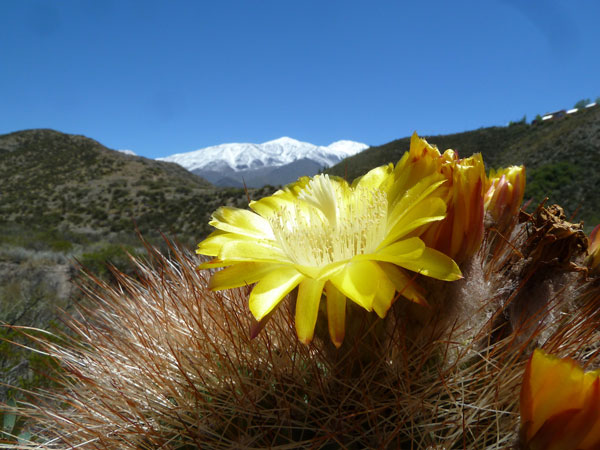
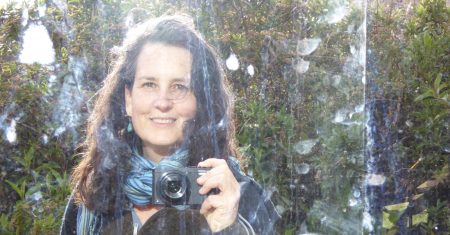
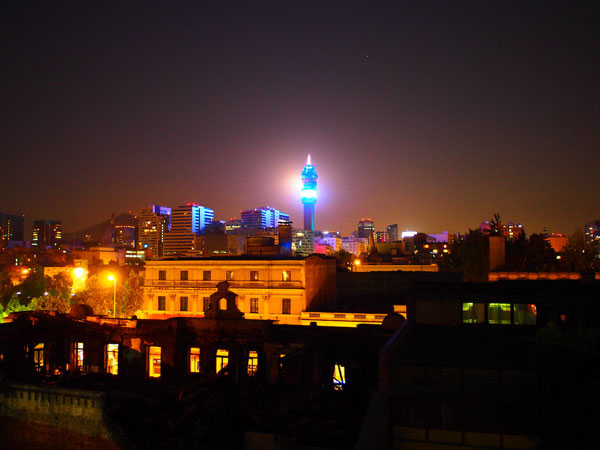
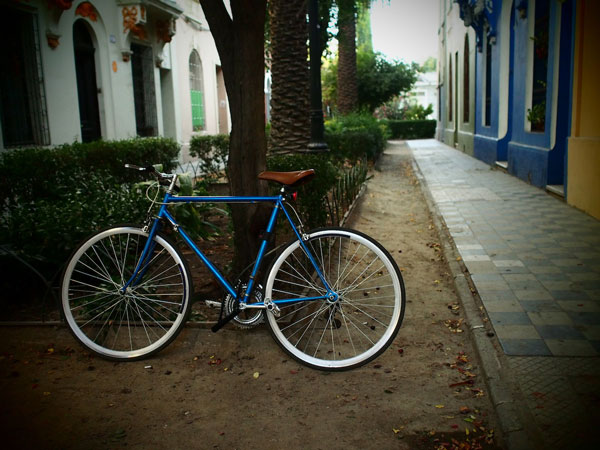


Thanks for the write up. of this.
Happy to do it. It was a lovely experience, and I was so pleased to have been able to take part.
Gracias
Saludos chilenos
Desde el colectivo La Sihembra
This is so well documented. As someone who couldn’t see it for herself: thank you, thank you, thank you